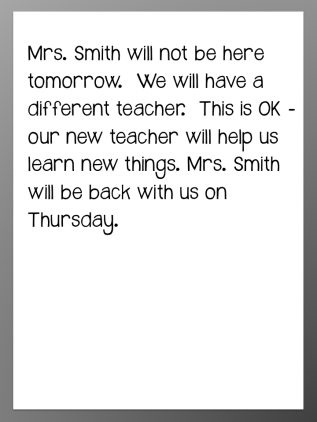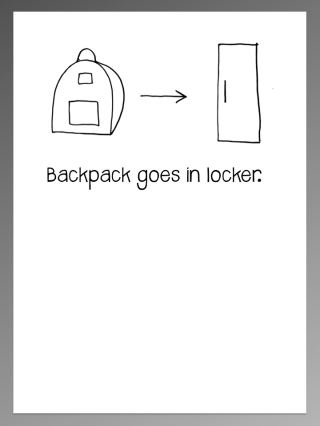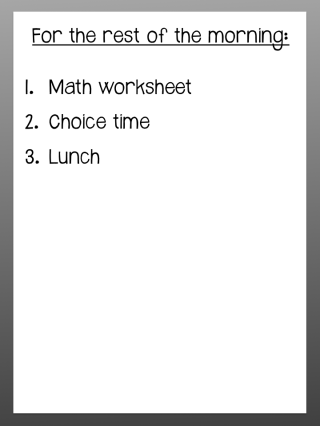
Quite possibly the most important thing I have learned over almost 15 years of working with children with autism and other disabilities is…
Ready?
WRITE IT DOWN.
There it is. When you want the child to understand something (big or small), write it down. Write it on a dry erase board, a post it note, or scrap paper. Write it in a notebook. Type it in a Google doc and print it. Write it in an iPad. Whatever.
Imagine if you were suddenly picked up, put on a plane, flown to another country, then dropped off in the middle of a foreign city with nothing. No one speaks your language, and you feel completely lost. What do you do? What do you look for? You start to walk around the city, looking desperately for something familiar. Just before panic begins to set in, you see the visual sign for restrooms. “Yes! Now I know where the bathrooms are!” you say to yourself. Shortly after visiting the bathroom, your eyes fall upon a sign written in your language containing directions to an information office. You reach the information office, which contains pamphlets in your language explaining where you are, what the cultural expectations are, where you can stay, how to communicate with the locals, and how to get home. The relief is palpable. Your anxiety decreases as you finally breathe again. You have regained your bearings. You will survive.
A perfect analogy? No, but hopefully it gets the point across. At home and in school, we live in very verbal worlds. We think, If I say it, then they get it. How often we say, “I told him!” However, we must remember that for children with attention-related disabilities and social understanding challenges, verbal communication often does not register like it does for most of us. Many steps are involved for verbal communication to be fully understood and applied. First it must be heard correctly (understanding vocabulary, tone, context, voice inflection, meaning, etc.). Then the meaning must be understood and categorized in the brain, pulling in prior knowledge and experience. Finally, when understood properly, the information translates into behavior, all of this assuming that the child can follow through amidst the thoughts and feelings that currently inform his or her readiness.
When information is written down, it cuts through all the verbal noise around the child and eliminates some of the steps required with verbal communication. It is concrete. It can be viewed again and again. It is simple. It is one step or rule, not six things to sort out. It is the familiar language from our analogy above, reducing anxiety and increasing clarity and predictability. We may not even fully understand why visual communication works so well with these children. This is OK. We do know that individuals with autism have helped us learn that in most cases, when it is written down, it sticks. I have worked with many parents and children in instances when verbal commands are given repeatedly with no success, and as soon as it is written down, the child follows through.
One sentence directives, a 3-step list, pictures, social narratives, “first-then” visuals – they all get through to the child through visual means, helping them learn by presenting information in a clear, organized, simple fashion. Below are some examples.




For some reason, writing it down for students is something we often stop doing. We must not slip back into our familiar “verbal mode” and neglect this important strategy! Develop the habit now, and never look back.

